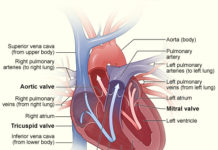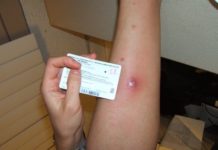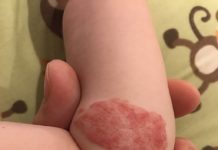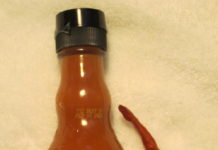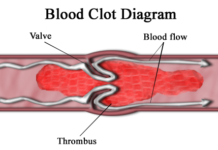by Shyree Maloy; Denver School of Science and Technology (Denver, CO)
“When I am in the sun sometimes I get heat bumps, which cause my skin to itch and consequently my eczema flares up,” says teenage student Alyssa Caldwell, from the Denver School of Science and Technology.

The dry weather and extreme temperatures of Denver, Colorado affects many resident teens suffering from eczema. The term “flared up” that Caldwell used in her statements is defined as a sudden appearance or worsening of the symptoms of a disease or condition, according to medical dictionaries. Eczema is a skin irritation that involves red, flaky skin, sometimes with cracks or even blisters. It is extremely itchy, but scratching damages the skin and causes it to become worse. According to the National Eczema Association, the exact cause of eczema is unknown, but it’s believed to be due to a combination of hereditary and environmental factors.
The hot weather in the summer affects teens with eczema because it makes teens sweat which irritates their skin, causing the rash to flare up and become much worse. Based on Progressive Health, the sweat washes up irritants to the skins surface that further aggravate the skin. The salt in our sweat causes eczema to dry out as well.
In order to better understand this skin disorder, a 1998 study published in a German medical journal of Dermatology investigated the different responses to heat between eczema patients and non-eczema subjects. The study was done by having each patient, expose their skin on the forearm on one arm to a cold bath (17–18 °C) and later to a warm bath (40–41 °C) for 15 minutes each. The results of this experiment showed that patients with Eczema aren’t able to regulate their skin temperatures as well as patients without eczema.
Not only is eczema affected by hot weather, but it’s also affected by extreme cold and the associated dry weather in the winter. Theolandra Robinson, another high school student with eczema, agrees. “My eczema gets dry in the winter, so I have to use a lot of cream to make sure it stays moisturized”.
According to the National Eczema Association, the low humidity in winter causes the air to be drier. This causes eczema to become dry and flaky in the winter and the skin more irritated and itchy. With eczema, the skin becomes very itchy and teens are tempted to scratch it more. This only makes it worse and doesn’t help it at all. Teens with eczema are more inclined to notice the weather, because of this irritation they directly experience.
Fortunately, there are still many ways to help and treat eczema. There are many different types of eczema, the most common type of eczema is atopic dermatitis which is mainly red flaky skin that can appear anywhere from the back of legs to even eyelids. Atopic Dermatitis can be treated by taking lukewarm baths followed by applying a steroid cream prescribed by a doctor.
Caldwell who suffers from atopic dermatitis uses a steroid cream called topical corticosteroids that has effectively helped and relieved her eczema.
Another way atopic dermatitis has been improved is through bleach baths. Adding a very small amount of bleach to the water can help kill bacteria living on the skin causing eczema.
Another type of eczema is nummular eczema, which is a coin-shaped rash that can appear on the legs, torso, and feet. Robinson who suffers from nummular eczema takes warm baths and applies a steroid cream to the spots where eczema has occurred.
In many cases patients have outgrown eczema in adulthood. However, Robinson and Caldwell are still affected by eczema today and are still treating their eczema every day. By treating eczema they have seen a major improvement with their skin.
Shyree Maloy

This work is licensed under a Creative Commons Attribution-NonCommercial-NoDerivs 3.0 Unported License



